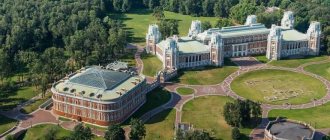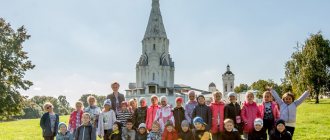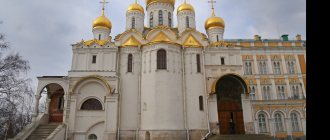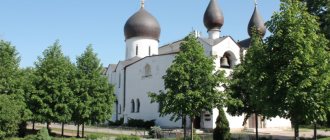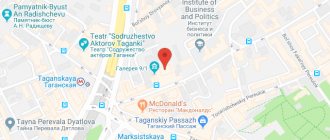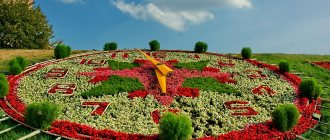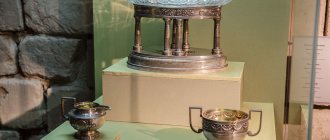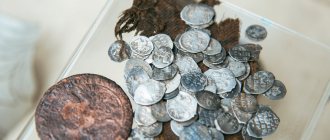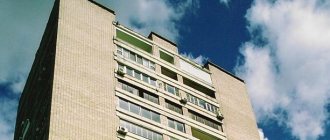The large palace and park ensemble Arkhangelskoye estate is located near Krasnogorsk.
On its territory there are three beautiful parks - Italian with terraces, sculptures and balustrades, regular French with berceau galleries and trimmed trees, and landscape English.
The Big Palace, the Small Palace "Caprice", the Colonnade-Tomb, the Church of Michael the Archangel, beautiful views - there is something to see and where to walk, this is a very pleasant and beautiful place. On weekends, the place is full of newlyweds who have come to take photos at the Arkhangelskoe estate museum as a souvenir of the wedding.
Currently (beginning of 2021) restoration work is underway at the museum-estate.
View of the Grand Palace and the Italian terraced park.
A wonderful fountain, although at that time it was without water.
One of the many sculptures.
Celebrity busts made in antique style.
Inner courtyard of the Grand Palace.
Monument to Catherine the Second. The Empress is represented here as Themis, the goddess of justice, although for some reason without the traditional blindfold and without scales. D.Ekaterina is translated from Latin as “divine Catherine” - the owner of the estate, Prince Yusupov, was personally acquainted with the empress and sincerely admired her talents.
Vases on the balustrade.
The space offers a beautiful view from the high bank to the fields located behind the oxbow of the Moscow River.
Temple-tomb of the Yusupovs. There was no time to bury anyone here, since the building was built shortly before the revolution.
Small stone church of St. Michael the Archangel, built in the 17th century.
The tower is near the church. It was still possible to walk along the river bank, but the clouds were gathering.
The owners of Arkhangelskoye at different times were the Odoevskys, Cherkasskys, and Golitsyns, but it was Prince Yusupov who turned the estate into a “Versailles near Moscow.” In Moscow, only the Kuskovo estate can boast of the same extensive regular park with many sculptures
Architectural ensemble:
- Grand Palace
- Small Palace "Caprice"
- Gonzaga Theater
- Temple-tomb
- Monument to Catherine II
- Temple of Michael the Archangel
- Holy Gate
- Tea house
- Pink fountain
- Clay fence
- Office outbuilding
- Pantry over the ravine
Nowadays, the former Yusupov estate houses the Arkhangelskoye Museum with collections of paintings and sculptures, and a large collection of rare ancient books. Lectures, excursions, concerts and festivals of classical and jazz music are regularly held. Details can be found on the official website.
This corner of the Moscow region is a great place for a walk on a nice summer day, so it’s better to arrive in the morning. There is one more point - when leaving Moscow, especially on weekends, you can get into a traffic jam, so you should think about the time of your trip in advance.
Arkhangelskoye and its owners
The first mention of the estate under the name Upolozy dates back to the 16th century, it was owned by the Moscow nobleman Alexei Ivanovich Upolotsky. At the beginning of the 17th century, after a long Polish intervention and the “great famine,” villages near Moscow were sold by their owners for next to nothing. Upolotsky also sold the estate.
The owner of the estate was Fyodor Ivanovich Sheremetyev, a governor and boyar. He served False Dmitry and Vasily Shuisky. After the end of the Time of Troubles, he helped in the election of the Romanovs to the kingdom. In 1613, he brought Mikhail Romanov from the Ipatiev Monastery to Moscow, where he was crowned king. Later, he rescued Father Mikhail, Metropolitan Philaret, and later the Patriarch from Polish captivity.
In the second half of the 17th century, the estate passed to the princely family of the Odoevskys. The prince ordered in 1660 to erect a stone temple . Since then the estate has been called “Arkhangelskoye”. Residential mansions and outbuildings - a barnyard, a mill and barns - were built around them, made of logs.
In 1780, Prince Dmitry Mikhailovich Golitsyn became the new owner of Arkhangelsk. The prince commissioned a French architect to design a new palace. The Italian Giacomo Trombara joined the construction. In Arkhangelskoye they created terraces, laid out flower beds and installed sculptures.
An engineer brought from Sweden built two dams on the Goryatinka River. Flooded meadows turned into reservoir ponds, from which water flowed through a system of pipes into the park, greenhouses and vegetable gardens. Fountains were installed in the park, and water supply was installed in the palace and outbuildings.
In 1810, Count Nikolai Yusupov bought the luxurious estate. The Yusupov clan was fabulously rich. The Yusupovs are the owners of 23 estates and dachas, houses in St. Petersburg and Moscow. The owners of several factories, a sugar factory and mines, they bought Arkhangelskoye in order to store here objects of art that Nikolai Borisovich Yusupov, a passionate collector and lover of beauty, had collected all his life.
With the outbreak of the war with Napoleon, Yusupov sent part of the collection to Astrakhan and hid the other part. The estate was robbed by Napoleon's soldiers, much was stolen and destroyed by the serfs. A fire in 1820 caused great damage, after which the count spent a lot of money to restore the estate.
Famous architects and artists worked on the restoration, so that Arkhangelskoye turned into a single palace and park complex . The park was cleared and beautified, the rooms of the estate were painted in a fashionable Empire style, which is distinguished by its splendor and monumentality.
Wall-high mirrors, large windows, an abundance of crystal and exquisite furniture emphasize the lightness and airiness of the palace. The owner made his magnificent house a place for ceremonial receptions. Emperors and nobles, famous cultural figures came here to have fun. The Yusupovs owned the estate until the October Revolution.
Personalities
Prince Nikolai Borisovich Yusupov
Prince N.B. Yusupov , 1751-1851, active privy councilor, son of Prince Boris Grigorievich and Irina Mikhailovna, born.
Zinovieva, was enlisted in the guard as a child, promoted to cornet at age 7, and began active service at age 16. Having served for 5 years, he then spent 9 years abroad and during this time traveled all over Europe. He saw a lot and learned a lot, met Diderot and Beaumarchais, and visited Voltaire, who in a letter to Catherine II expressed his pleasure at meeting Yusupov. He returned to his fatherland with a reputation as a lover and connoisseur of art. The Empress was very favorable to him. Two years later, in 1783, he was appointed envoy to Turin, and then had diplomatic missions to Venice, Naples and Rome, where he negotiated with the Vatican on the issue of governing the Catholic Church in Russia. At the same time, Yusupov bought paintings and statues for Catherine. In the 90s, returning to Russia, he managed a theater and glass and porcelain factories. Under Paul I, Yusupov received the rank of actual privy councilor, St. Andrew's ribbon and the command of the Order of St. John of Jerusalem and was the president of the Manufactory College, and from 1800 he was in charge of the estates. In 1804, Yusupov went abroad and only after 1812 was appointed chief administrator of the Kremlin Expedition and the Moscow Armory Chamber, and in 1823 a member of the State Council, remaining in his previous position. At the coronation of Paul, Alexander I and Nikolai Pavlovich, Yusupov served as supreme marshal.
Prince Yusupov lived to a ripe old age and was one of the last of Catherine’s nobles. He combined a brilliant education with a great natural intelligence; a descendant of a Tatar of the 18th century, he was, in his tastes and address, a European of the 18th century; friendly and simple with everyone, he was especially kind to the ladies: his magnificent park in Arkhangelskoye was accessible to everyone, and the owner politely bowed when meeting unfamiliar ladies. Yusupov loved to show off his wealth and luxury, but this did not prevent him from being a prudent person, even being known as stingy, thanks to which he did not upset, but increased his father’s enormous inheritance; after it more than 20/t remained. souls, and he did not know exactly where and how many estates he had.
A fan of the arts, Yusupov began contacts abroad with famous artists of that time: Grez, Angelica Kaufman, David, Canova, and began collecting paintings, statues and bronze in his youth; his extensive library contained very rare publications. Damaged by a fire in 1820, these rich collections still decorate Arkhangelskoye, where Yusupov had his own theater with a serf troupe of actors. Weakness for women was Yusupov's predominant passion; in his youth, the prince enjoyed success among women, and they say that among the heads of Rotary work that decorate the walls of an entire room in Arkhangelskoye, there are many beauties who gave Yusupov their love, whose names tradition has not preserved in its memory. Yusupov was sung by Pushkin in verse “To the nobleman!”
Prince N.B. Yusupov was married to the widow of his relative, Tatyana Vasilievna Potemkina, born. Engelhardt, niece of Prince. Potemkin, but soon separated from his wife. From this marriage there was only one son, Prince Boris Nikolaevich. Prince Yusupov died in Moscow, during cholera, on June 15, 1851 and was buried in the village near Moscow. Spassky.
(From the portrait of Lampi, which belonged to Princess Z. N. Yusupova, village of Arkhangelskoye, Moscow province.)
Princess Tatyana Vasilievna Yusupova
Princess T.V. Yusupova , 1769-1841, daughter of the captain of the Smolensk gentry Vasily Andreevich Engelhardt and the sister of the Prince of Tauride, Marfa Aleksandrovna Potemkina, 12 years old was already granted a maid of honor. The Duchess of Kingston, who arrived in St. Petersburg around this time, was so fascinated by the young beauty that she wanted to make her the heiress of her colossal fortune if she would go with her to England, but Tatyana Vasilievna refused. The niece of the Most Serene Prince did not need the duchess's millions: like her older sisters, she received a large dowry, although she did not play such a role in her uncle's life as they did. In 1785, she married Lieutenant General Mikhail Sergeevich Potemkin, who was 25 years older than her. After 6 years, she became a widow—her husband drowned, and two years later, in 1795, she became the wife of the brilliant Catherine’s nobleman, the rich man Prince N.B. Yusupov. The marriage was unsuccessful, and soon the couple began to live apart.
The princess loved rural solitude and avoided noisy light; A small select society gathered around her - Derzhavin, Krylov, Zhukovsky and Pushkin were her guests; she patronized artists and the famous Parasha Sibiryachka. Yusupova had a practical mind and skillfully managed her estates; Others resorted to her experience in financial matters.
Simply by dressing and living modestly, she became known as stingy; but denying herself, she spent a significant portion of her income on charitable causes and rarely refused help. “Yusupova had a passion for precious stones, and she compiled a large collection of stones, cameos, carnelians and onyxes, carved with emblems and mottos; The decoration of this collection was the Polar Star diamond and the Peregrina pearl of Philip II of Spain. Princess Yusupova died on May 25, 1811 and was buried in the Annunciation Church of the Alexander Nevsky Lavra.
(From a portrait of V. Lebrun, belonging to Princess Z. N. Yusupova, St. Petersburg.)
Palace and park complex: parks and estates
Versailles is a luxurious palace and park complex on the outskirts of Paris with a huge palace, gardens, fountains and luxurious interiors. Contemporaries called Arkhangelskoye Versailles near Moscow, and its owner was visited by famous guests:
- artists Makovsky. Serov and Korovin;
- guests of honor - representatives of the imperial family;
- Pushkin, Herzen, Ogarev;
- Karamzin, Vyazemsky;
- Benois, Stravinsky, Igumnov.
The Arkhangelskoye estate with its charming lawns and well-groomed alleys unites several magnificent parks:
- Italian - with numerous terraces and sculptural compositions. There are sculptures of 14 lions, 4 dogs, 28 busts, 2 gladiators.
- French - with luxurious galleries and well-groomed lawns, with geometrically correct alleys.
- English landscape painting impresses with its unique natural colors.
The park, the estate of which is divided into two parts - regular and landscape - is framed by a palace with a front courtyard . The park was born along with the construction of the palace and was constantly improved. Impeccable in composition, it reflects the tastes of different eras.
On the edge of the cliff above the Moskva River there are two greenhouses, next to them is the “Roman Gate”, a tribute to the then fashionable fascination with ancient ruins. A wide staircase leads down to the river. Everywhere there are well-groomed paths, alleys and gazebos, complementing the park ensemble.
The hill on which the palace stands was turned into a series of terraces by the Italian architect Giacomo Trombara. The main part of the park is occupied by alleys and avenues with trimmed trees, as well as numerous marble sculptures that set off the greenery with their whiteness.
The upper terrace in front of the palace is the Main Courtyard , in the center of which is the sculpture “Hercules and Antaeus”. On the balustrade of the upper terrace there are marble vases, the staircase going down to the lower terrace is decorated with female figures, lions and dogs. It leads to a small fountain “Cupid with Dolphins” by the Italian master Giromello.
The main part of the park is the Grand Parterre , a rectangular space surrounded by trimmed trees and sculptures. There are 4 marble vases and 20 sculptures. 8 wide linden alleys diverge in different directions from the Grand Parterre, forming a “ceiling” above the heads of visitors. The alleys converge in the center towards the patron of the muses - Apollo.
On the platform, behind the stalls, there is a flower garden with fountains and a huge statue of Hercules and Flora. On the sides there are small groves of green lawns, lined with rows of linden trees. Under N.B. Yusupov, pheasants and peacocks, camels and llamas, rare breeds of chickens and turkeys walked in the enclosure along the wall of the lower terrace, and sturgeon were bred in the ponds.
To the right of the palace is an English landscape park , reminiscent of a forest with tall trees connected into a picturesque composition. Greenhouses were set up at the edge of the forest, where dates and pineapples, strawberries and cucumbers were grown all year round.
Five Russian emperors visited the Arkhangelskoye estate: Nicholas I, Alexander I, Alexander II, Alexander III, Nicholas II. In honor of the arrival of each sovereign, a column with a double-headed eagle and dedication inscriptions in French was installed in the park.
A.S. Pushkin immortalized the memory of his master Yusupov in his “Message to a Nobleman.” Later, in 1903, a monument was erected in the park in honor of the poet.
Plan of the Arkhangelsk estate complex
| 1. Theater 2. Pavilion 3. Monument to Catherine II 4. Memorial columns 5. “Tea House” 6. “Caprice” Palace | 7. Sweet gazebo 8. Monument to A.S. Pushkin 9. Palace with wings 10. Trellis 11. Pink gazebo 12. Retaining walls 13. Tomb | 14. House for visitors 15. Gate over the ravine 16. Office wing 17. Holy gate 18. Obelisk 19. Church 20. Park |
Architectural ensemble of the complex
The elements of the estate complex were built at different times, but they are harmoniously combined and complement each other.
1. Grand Palace. 2. Small Palace "Caprice". 3. Temple of the Archangel Michael. 4. Temple-tomb of the Yusupovs. 5. Temple-monument to Catherine II. 6. Gonzaga Theater 7. Tea house. 8. Holy Gate. 9. Office outbuilding. 10. Pantry over the ravine. 11. Pink fountain.
Small Palace "Caprice"
In the western part of the park is the Small Palace “Caprice”, built at the end of the 17th century, a place of solitude and relaxation for the owners of the estate from the noise and bustle of the Big Palace. Guests gathered here for musical evenings and friendly dinners. The walls of the rooms were decorated with paintings - the pride of the owner.
An open arena was built next to the palace with winding paths for horses to ride and niches for riders to rest in the shade. The area in front of the palace was decorated with 35 sculptures, marble vases and busts of ancient heroes. The Small Palace lived up to its name - “Caprice” cost the owner a tidy sum, even taking into account his fabulous income.
Temple of the Archangel Michael
The Church of the Archangel Michael was built on the site of a dilapidated wooden church by order of boyar Odoevsky in 1667 on an elevated site near the Moscow River. The single-domed temple with a chapel is decorated with rows of kokoshniks running up to the domes crowned with golden crosses.
A shady linden alley leads to the temple, which ends at the “Holy Gate”. The church is surrounded by a picturesque fence with turrets at the corners, which gives the composition the image of a small monastery. The temple stands away from the noisy paths of the estate, surrounded by tall pine trees and the sky.
In front of the northern facade of the Church of the Archangel Michael there is an adobe fence - a wall with a massive arched opening. Along the edges of the wall there are three-tiered stone towers topped with wooden spiers.
Temple-tomb of the Yusupovs
A monumental pillarless temple with a rotunda, the vaults of which are supported only by the outer walls. The church on the basement with a four-column portico - a covered gallery in front of the entrance to the building - was built in 1914. Construction is associated with the death of Nikolai Feliksovich Yusupov in a duel in 1908. His parents ordered the architect Roman Klein to build a tomb.
Inside there is a hall decorated with columns , covered with a high dome, the walls are decorated with stucco and bright blue and gold paintings. There is an elegant balustrade along the perimeter of the building. The tomb was not used for its intended purpose: the descendants of the famous family went abroad after 1917.
Temple-monument to Catherine II
Count Yusupov, an admirer of Catherine II, decided to decorate his magnificent estate with a temple in honor of the Empress. True, Catherine never got around to visiting the estate, which greatly upset the owner.
The temple, built in 1819, is designed in the form of a portico - the covered gallery is formed by a colonnade with an elegant ceiling. The Empress is represented as the goddess of justice Themis. Behind the back are the lines of solemn dedication: “You, to whom heaven sent and granted fate to desire what is fair and achieve what you want.”
Temple-monument to Catherine II
The theater was designed by the architect Pietro Gonzago. In the spring of 1817, the architect Beauvais began construction of the theater building. The austere wooden two-story building, covered with golden-white plaster, is decorated with four graceful columns. The only entrance is on the south side, and not in the center of the façade. In front of the porch, on high stone pedestals, there were two lanterns: the performances began late in the evening.
In contrast to the modest facade, the interior of the theater was luxurious. Spectators have at their disposal a spacious hall with seats in the stalls and two-tier boxes separated by light balustrades.
But the main luxury of the theater was the scenery made by Gonzago, which made the audience forget about the performance itself and admire the magnificent canvases. The architect created 12 changes of scenery for Yusupov's serf-owned theater; they have survived to this day.
The opening of the theater was celebrated magnificently: guests in gilded ceremonial carriages stopped at the entrance and ceremoniously took their seats. For the sake of such an event, monarchs came to Yusupov - Russian Emperor Alexander I and Prussian King William III. The delighted monarchs could not find words to express their feelings, they were so amazed by the actors and scenery.
From childhood, the serf artists of the Yusupov Theater learned to play the piano, sing, as well as Italian and French. Abroad, the Count's actors learned the wisdom of ballet; the best of them lived in Moscow and, at the invitation of the owner, demonstrated their art at the Arkhangelsky Theater. The count invited Italian troupes to his theater.
Pantry and pink fountain
The storeroom above the ravine was built at the end of the 18th century. A two-story building with an arched opening above the road at the bottom of the ravine is located in the landscape part of the park. Today there is a lecture hall where conferences, concerts and exhibitions are held.
The Pink Fountain is a small rotunda built in the mid-19th century. A gazebo in the form of four columns of pink marble with elegant flower bouquets painted inside a light wooden dome. In the center of the building is a sculptural fountain “Boy with a Goose”. To implement the idea, master engineer Norberg built a hydraulic machine to supply water.
Attractions
The Arkhangelskoye estate is a museum with many masterpieces, and if you want to appreciate all the works of art, then set aside at least a whole day for this. The composition includes a palace (Big House), a small palace “Caprice”, a theater, a tomb temple (“Colonnade”), sculptures, paintings, rare books, manuscripts, photographic funds and, of course, a wonderful park.
Colonnade
Theater
The theater in Arkhangelskoye was designed by the little-known architect Pietro di Gottardo Gonzago. He is also the author of the decorations for the entire estate. In the past, Italian architects erected many buildings in Russia. For example, the Moscow Kremlin was designed by Milanese engineers.
Yusupov and Gonzago met at the end of the 18th century. As Catherine II's envoy in Turin, Nikolai Borisovich appreciated the architect's work. Gonzago was a student of the Galliari brothers and a talented decorator at La Scala.
Yusupov invited Gonzago to St. Petersburg, where he became a decorator at court theaters. Subsequently, the talented artist was entrusted with the design of balls, masquerades, coronation celebrations, weddings of members of the royal families, funeral ceremonies and many other events requiring solemnity. For the Arkhangelsky Theater alone, Gonzago created 12 changes of scenery.
A rare case, but the theater has never been reconstructed since its construction. Its original appearance has been almost completely preserved. But access to the area around the theater and to the theater itself is closed. The building behind the high fence now houses a commercial organization. Strict private security does not allow outsiders into the territory, although formally, the building is part of the Arkhangelsky Museum-Estate.
Gonzago Theater
The question is, how did it happen that an architectural monument fell into the hands of some commercial organization? The answer is simple - in the 30s, the Arkhangelskoye estate became subordinate to the Ministry of Defense. A military hospital was built on the territory, but architectural monuments were preserved.
But in some “amazing” way, a man who had never even been in the army became the Minister of Defense. The “gentleman” from the tax office almost completely destroyed and sold the entire Russian army, but he was not even cheated for this, although in any other country a person would have been imprisoned for life, but our court is the most “humane” court in the world.
Temple-tomb
The death of one of their sons prompted the Yusupov couple (Zinaida Nikolaevna and Felix Feliksovich) to build this monument. Russian engineer R.I. Klein was hired for the design. The construction of the tomb in Arkhangelskoye took about 4 years, but on the eve of the opening of the memorial, the war began and the work was never completed.
Temple-tomb
Zinaida Nikolaevna wanted the estate to become a burial vault for their family, but this was not destined to come true: after the revolution, the whole family emigrated to France and never returned to their homeland.
Colonnade of the Temple-Tomb
Castle
The big house (palace) is the main attraction of the estate. The palace is a striking example of Russian classicism, popular at that time. Motifs of Roman rule and Egyptian palaces were also used.
Castle
Grand Palace
The Grand Palace is the main manor house, a place of communication between the owners and the embodiment of their culture. Designed by the French architect Charles de Guern, the palace is located in the central part of the estate, where dense forest alleys lead.
History of appearance
Construction, begun in 1784 by Prince Golitsyn, lasted 40 years. The abundance of glazed doors and huge windows is evidence that this is a summer palace. Count Yusupov collected everything beautiful and arranged the Arkhangelskoye estate to match a French palace: he landscaped the elegant house and landscaped a huge shady park with lush alleys.
The wealthy owner ordered paintings and antique sculptures, tapestries and porcelain, crystal chandeliers and sconces, mirrors and furniture specially painted for the palace to be delivered here. For Arkhangelsk, Yusupov built porcelain and crystal factories. The interior of the house was painted by famous artists and architects.
Architectural features of the Grand Palace
A massive triumphal arch leads to the territory of the house. At the central entrance to the palace there are vases on pedestals, statues of dogs and sculptures in stone niches. Door leaves are in lattice frames.
All facades of the building have numerous columns that give the monumental structure lightness and grace. In the center of the main facade there is a portico of four columns and a small lantern with a spire. The center of the building is highlighted by a rotunda with high and long windows resting on the floor, which opened wide in the summer, opening the house to the sun and greenery.
Two powerful colonnades of 14 pairs of columns cover the front courtyard and unite it with the outbuildings in front. The front courtyard, surrounded by columns, looks like a huge open-air hall.
Two terraces with marble balustrades descend from the southern facade - low terrace fencing with rows of figured columns - comfortably fit into the architecture of the large house. The terraces are decorated with magnificent vases, figurines and busts of ancient heroes, generals and philosophers.
The peculiarity of the palace is the unequal height of its floors. On the first, higher one, there is a suite of luxurious state rooms, on the second there are modestly furnished living rooms. In two wings there is a serf theater, an art gallery, a library and a kitchen.
Mansion interiors
Inside the palace, the splendor and elegant taste of the owner can be felt everywhere. Abundant lighting makes paintings on the walls spectacular. On the ceilings there are massive chandeliers with three tiers of candles, made of bronze with gilding.
The main decoration of the halls are Corinthian columns . The light green color of the walls is combined with the yellowish stones of the column trunks. The flights of stairs are decorated with Egyptian statues.
State rooms are designed to demonstrate the wealth, nobility and luxury of the owner. The front bedroom was not used for sleeping; close friends were received here. The Oval Hall, where ceremonial receptions were held for distinguished guests, was decorated with colorful and solemn decorative paintings.
The main dining room – the Egyptian Hall – is a unique collection of porcelain. On the open shelves are Japanese and Chinese vases, candlesticks with figures of Egyptian women, made of black gilded bronze. In the dining room, the count placed the largest six-meter canvases of paintings. On the far wall is a portrait of young Boris Yusupov in Tatar national clothes and riding a horse.
In the Imperial Hall there are marble busts of Catherine II and Peter I, who were revered by the owners of the palace.
Manor Park
The estate was founded in the 60s. XVII century boyar Odoevsky. In the 18th century it belonged to the Golitsyns for a long time, and then passed to the Yusupovs (in 1810). The main development lasted from 1780 to 1831 according to the design of the French architect de Guern. Now the palace houses a museum and a sanatorium. In front of the palace there is a regular park, with terraces going down to the Moscow River. The terraces are decorated with numerous sculptures, staircases and bosquets made of topiary linden trees. The regular park turns into a pine-birch-linden forest. The condition of the plantings is good, which is certainly a consequence of careful careful maintenance. There are 22 introduced and 15 native species in the park.
Among the introduced species, deciduous plants predominate. Nine old Siberian fir trees (height 24 m, trunk diameter 39 cm), an alley of Siberian larch (height 28 m, trunk diameter 110 cm) and five specimens of Weymouth pine (height 20 m, trunk diameter 41 cm) are in good condition. The best development of local plants was achieved by: weeping birch (height 26 m, trunk diameter 70 cm), common spruce (height 28 m, trunk diameter 70 cm), Scots pine (height 25 m, trunk diameter 60 cm), pedunculate oak (height 25 m, trunk diameter 43 cm) and small-leaved linden (height 25 m, trunk diameter 44 cm). All of them bear fruit abundantly and are found in large numbers. To further improve the condition of the plantings, it is necessary to cull defective specimens in new thickened plantings. The estate is protected by the state.
Source: M.S. Alexandrova, P.I. Lapin, I.P. Petrova et al. Woody plants of parks in the Moscow region, M., 1997
Collections of the Arkhangelskoye Estate Museum
2 years after the establishment of Soviet power, a museum was opened in Arkhangelskoye, the basis of which is the collection of art objects of Count N.B. Yusupova. In 1900, the descendants of the count bequeathed the collection collected by their ancestors to the state, so in the 21st century we admire the beautiful works of the masters of the past and can better understand the history of our country.
The Yusupov collection includes:
- 600 paintings, paintings from the Renaissance era of the 17th-18th centuries;
- more than 20 thousand valuable antique books and drawings;
- publication of treatises by Cicero;
- a collection of sculptures from works by European masters;
- exhibits from the collection of decorative and applied arts: antique carriages, furniture, dishes and carpets, silver candelabra and forged table decorations; The exhibits are made of metal and wood, stone and glass, velor and porcelain, clay and papier-mâché.
Excursions
The palace is available for tours throughout the year. For example, you can see the front courtyard and state rooms of the palace, listen to about the history of these places as part of the “Arkhangelskoe. State halls of the palace." Duration of the excursion is 1 hour 15 minutes.
Most of the park excursions to the terraces, gardens, and Pushkin Alley are available only in the summer.
For unorganized, group excursion groups, excursions take place from Wednesday to Sunday from 11 a.m. to 4 p.m. (in winter up to 3 p.m.), if there is a free guide. This excursion is paid for at the palace.
All details about excursions and bookings can be found on the official website of the estate.
"Arkhangelskoye" after the 1917 revolution
The Soviet government that came in 1917 expropriated the estate, turning it into a historical and art museum. In 1937, instead of the estate's greenhouses, the Central Military Clinical Sanatorium was built.
After the Great Patriotic War, the territory was given to athletes: the CSKA football and hockey teams were located here.
Since the 90s of the 20th century, the Arkhangelskoye estate received the status of a palace and park complex and is open to the public. Architect Harko and artist Nivinsky renovated the main building of the estate and restored the paintings.
How to get to Arkhangelsk
You can get to the estate either by public transport or by your own car:
- Minibus No. 151 from Tushinskaya metro station. Stop "Sanatorium".
- Buses No. 540, 541, 549 from Tushino to Arkhangelskoye.
- Train to the Pavshino station from the Rizhskaya, Dmitrovskaya or Voikovskaya metro stations. Next, minibus No. 49 to the Arkhangelskoye stop or No. 31 to the Sanatorium.
- By car, take the Volokolamskoe or Novorizhskoe highway towards the region to the intersection with Ilinskoe highway. Continue straight to the estate.
There is paid parking near the entrance to the park. The cost of one place per day is 300 rubles.
The estate-museum today
Nowadays, “Arkhangelskoye” is the only estate, an example of the Russian estate style, which is experiencing a rise. The palace collection includes paintings and graphics, sculptures and decorative art objects. The estate operates a photo fund; exhibitions and lectures, excursions, public events and concerts are held annually. Every year the “Night of Museums” and the “Estate” festival are successfully held here. Jazz".
Muscovites and guests of the capital come to the park for a walk. There are free Wi-Fi internet zones on site. Services are offered by cafes and restaurants, grocery stores and ice cream stands. People come to the territory with their own food to have a picnic in the park clearing.
The estate in our time
Nowadays, the Arkhangelskoye estate is a museum, a concert venue, a park, an exhibition complex, a place for weddings and just a place for a pleasant time with the whole family.
For 11 years in a row, the estate was the venue for the Jazz Festival. The Jazz Festival is one of the largest open-air music events in Russia. Musicians, singers, jazzmen, people of various musical styles came here, annually attracting tens of thousands of people who wanted to watch an interesting show.
With the support of the Moscow Department of Culture, as part of the “Best City on Earth” festival, since 2015 the estate in Tsaritsyno has been chosen as the venue for the festival. Due to its more favorable location and transport accessibility, the event organizers expect to attract a larger number of visitors. The festival takes place on the 20th of June.
Jazz festival
